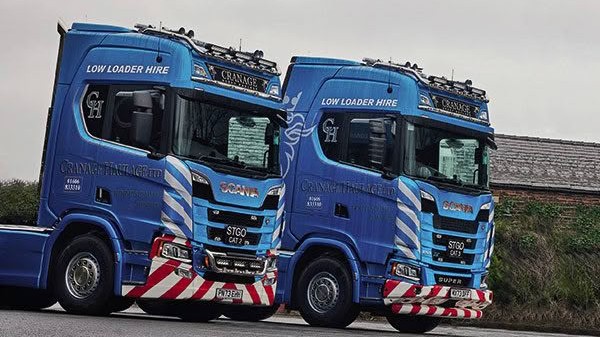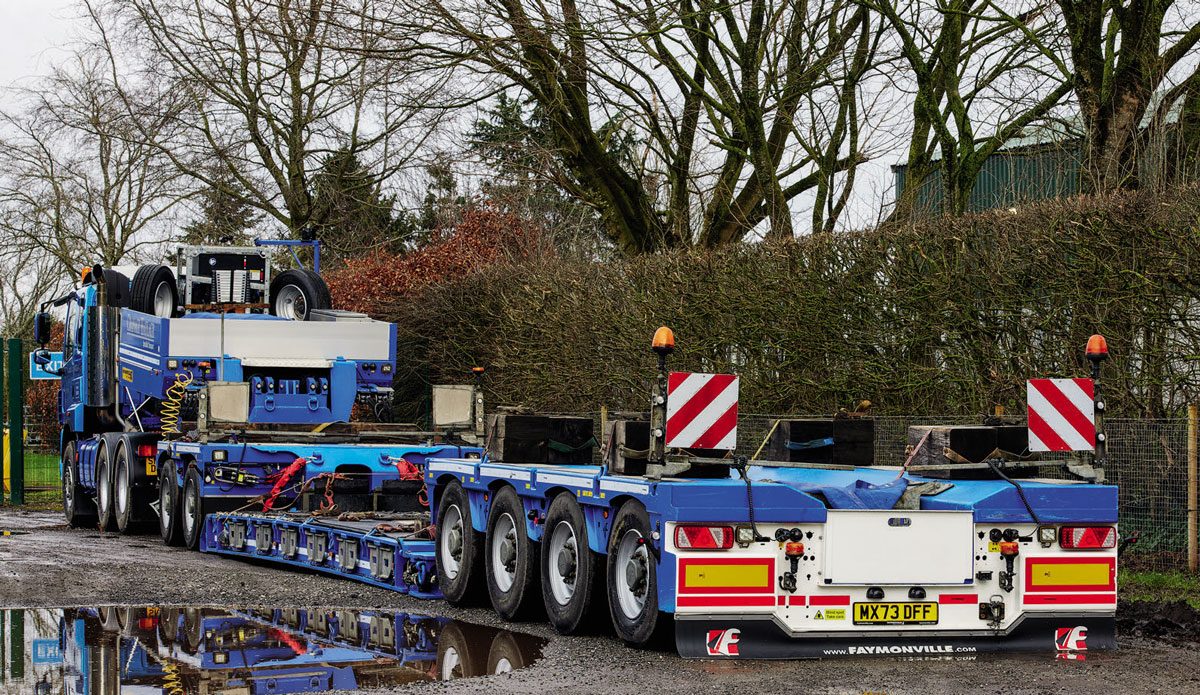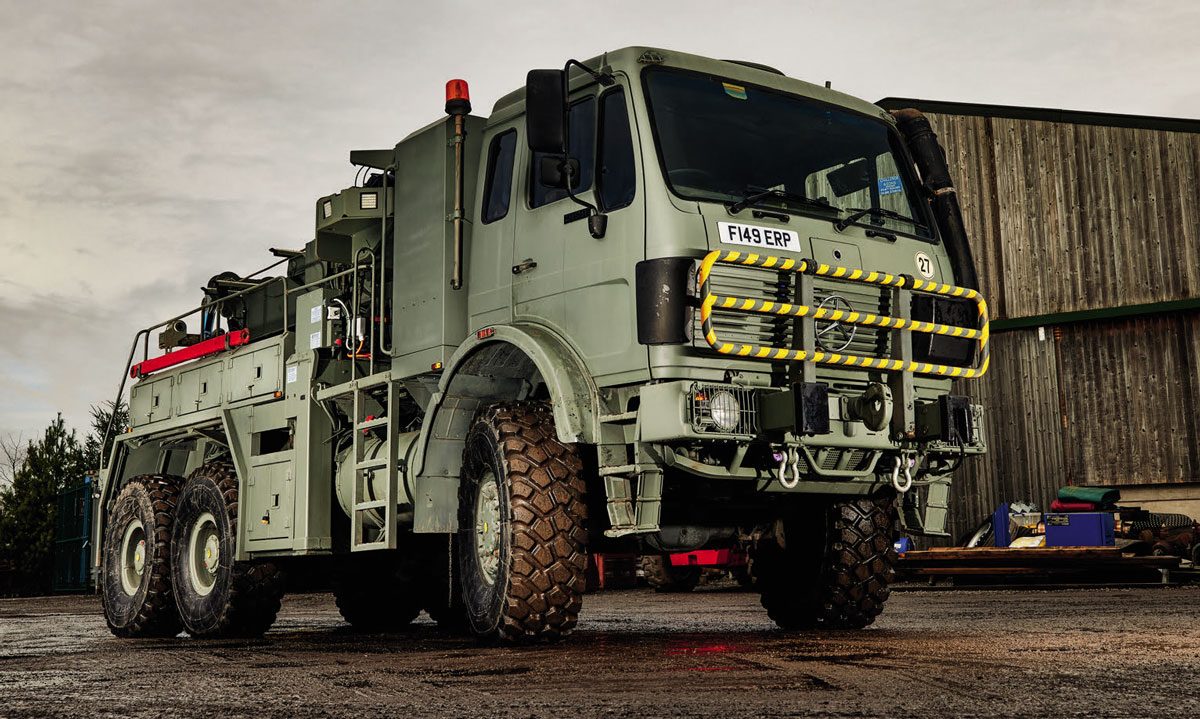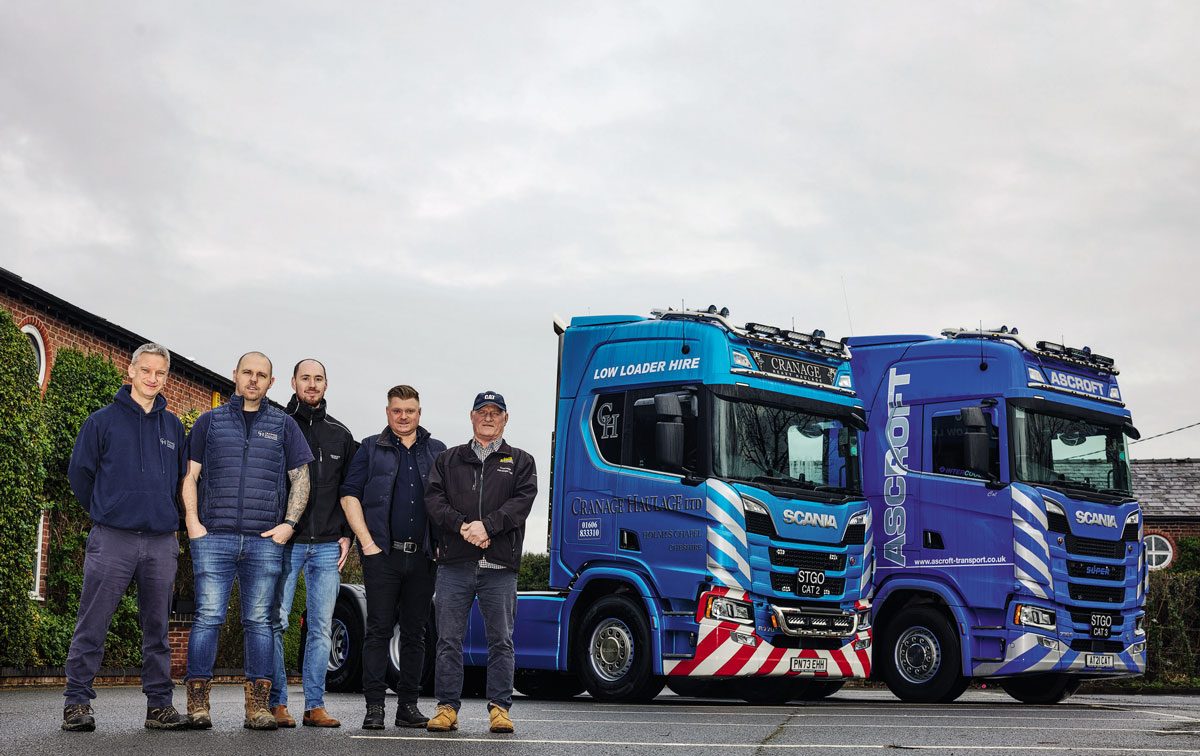
Will Shires meets up with a pair of UK heavy-haul operators who share their thoughts on the hoops they and others in the business must jump though to get the job done.
There are 184 counties in the UK, and most have their own rules and regulations regarding the movement of oversized loads, which proves a complete headache for heavy hauliers.
Daniel Wood knows this only too well. He moved from a family-run general haulier to become transport manager at Cranage Haulage, a heavy haulage specialist based in Cheshire, northwest England.
“Think of all the normal restrictions and hassles a general haulier faces, with drivers’ hours, safe parking, customer rates and the driver shortage, and on top of that you have everything else,” he told me, when I caught up with him recently.
The “everything else” he’s referring to doesn’t just include the swathes of red tape imposed by the different counties but all the other bureaucracy that affects the sector. And there’s a lot of it.
Cranage Haulage and its sister company Ascroft Transport are based at the same site but are run as separate businesses. Each has its own customer base and carries out distinctly different work. Cranage, formed in 2004, concentrates on moving specialist plant and equipment on its fleet of low-loader trailers, including road rail cranes. In recent years, it’s added some Hiabs and flats to its 18-strong truck fleet, which has allowed it to increase its flexibility. “It’s a one-shop stop,” explains Daniel. “If there is a big machine to move, and a lot of kit needs to be taken off it, we can ship the whole lot. There’s no need to bring in subcontractors to lift buckets, walkways and other attachments.”

Ascroft, which celebrates its 30th anniversary this year, predominantly moves new equipment and has a long- running contract with Finning, which is the UK’s sole supplier of Caterpillar equipment. In addition to collecting plant from UK ports and delivering it to Finning’s UK National Distribution Centre, and onwards to customers, it also moves UK-manufactured Caterpillar ADTs and loading shovels. It’s a contract the haulier is fiercely proud of, and eight of its 14 tractors are finished in Finning’s distinctive black livery.
Another thing both companies pride themselves on is providing an exceptional level of service. “We do things properly, and there’s absolutely no cutting corners here,” says Gareth Edwards, MD of both Ascroft Transport and Cranage Haulage.
This insistence on doing things right, coupled with the legislation-heavy sector they operate in, results in a staggering number of hoops to jump through. A good example of this is the 400-plus movement orders the companies apply for every week.
Required for any journey where a truck runs overwidth, overweight or overlength, a typical movement order application might generate 30 replies from each authority, all of which must be checked carefully. This is enough to keep two staff members permanently employed across the two businesses.
Gareth explains that the biggest headache is caused by the lack of consistency and uniformity between the different areas.
“Some places, such as North Wales, will only accept a movement for one day,” he explains. “While Merseyside is three days, Manchester is 10 days and West Yorkshire and Lancashire are 30 days. It can be tough when you’re traversing through these places.”
Gareth adds: “The real challenge occurs when a part doesn’t arrive in time, there’s a delay at the docks, or the job is rained off. And now, because we are running compliantly, through no fault of our own, we run into problems. So, we ask for help and request an extension to the movement order.” This involves a lot of additional legwork and admin, with subsequent date and route changes, and numerous calls to local authorities and police forces.
There are also abnormal load curfews to consider, which can affect travel at peak times, weekends and bank holidays. And in some counties, you can’t move in darkness.


“But, of course, you can’t just pull into a layby,” Daniel reminds me. “You have to plan very carefully where you’re going to sit out a curfew.
“And then there are all the small intricacies – like vehicle registrations,” he continues. “You need the registration on the movement order. But it might be seven days before the move, and anything can happen in that time. We have had movement orders rejected just because of the registration change. So, then we have to resubmit, which could take another five working days.”
While both companies represent the pinnacle of professionalism, mistakes can happen, often through no fault of their own.
Jack Ollerton, operations director at Cranage Haulage, gives the example of a driver who collects a 4.5m-wide machine, but when he measures it, he finds that it’s actually 4.6m wide. “It might have had an extra set of steps bolted onto it. And now you could be parked up for a week,” he explains.
“This isn’t because someone has done the job wrong, or cut corners, but is simply down to a clerical human error,” says Gareth.
Perhaps the hardest part is having to relay all of this to a customer, who might have an expensive machine waiting to be delivered. Daniel says: “You have to explain what you’re going through, when all they want to do is move the machine to the job to start earning money.”
Another area where a bit of uniformity wouldn’t go amiss is with police escorts. Although self-escorting vans have been permitted in the UK for about 20 years, the police will insist on providing an escort for certain widths. The exact width varies from force to force.
Police escort pricing can be eyewateringly expensive, and according to Adam Pritchard, transport and compliance coordinator for Ascroft Transport, it’s rare to see any change out of £2000 (NZ$4200), even for a short journey. Incredibly, the rate can vary depending on who attends, with police sergeants commanding a premium. Both companies pass these costs onto their customers, some of whom are surprised to discover that the police fee can be higher than the actual move rate.
“Meanwhile, we get calls asking us to move a 20-tonne excavator this afternoon, and we must explain that it doesn’t work like that. It’s crazy the hoops you must jump through just to move a machine,” says Daniel. “For me, it’s been a massive learning curve. The intricacies surrounding the planning are phenomenal, and it’s blown my mind what’s involved. It had certainly helped being surrounded by 50 years of heavy haulage experience.”

The fleet
Excluding a lone Cat-powered Foden Alpha, both companies operate exclusively Scania fleets. Although Ascroft has previously mainly run Scanias, until recently Cranage did have several Volvo interlopers. “One was an FH16 600, but it was let down by the dealer backup,” says Daniel.
Among the Ashcroft Scanias are three 540S tractors, which Edwards says are doing phenomenally well on fuel. “They’re getting 9mpg (26L/100km), and I can’t believe how well they perform,” he says.
But the hard work is carried out by a Scania 770R XT and a 770S XT, both of which are rated at 150 tonnes.
“With a V8, the more weight you put on, the more they dig in and give you power,” Daniel tells me. “With a 770, the country is flat, even at 80 tonnes. At 40mph (64km/h), it doesn’t slow down. The wagon eats the road all day long.”
Double-drive tractors are generally kept for four years, while 6×2 mid-lifts remain on the fleet for five years. “That’s when we want to turn them over for the best residual values,” explains Daniel.
All but two trucks are autos, a move Daniel thought the company would never make. “We fought autos for a long time, but with the 730, you couldn’t have a manual, and the drivers chose the horsepower over manual gearboxes. Autos really have come on a lot,” he admits.
Both companies have run a selection of different makes of low-loader, including Nooteboom, Broshuis and Faymonville. The current trailer of choice is Faymonville, and the companies recently invested more than £1 million (NZ$2.1 million) on three new VarioMAX low-loaders, one for Cranage and two for Ascroft.
It was UK distributor Traffco’s highest-value UK low-bed order to date. There are also three flats on the fleet, which run behind Hiab-equipped tractors.
Between them, the two companies have a fleet of five Mercedes-Benz Sprinter escort vans. They’re fitted out to the highest standard with all the relevant kit, and a high level of comfort for the drivers.
Another vehicle that caught my eye was a 1989 Mercedes 6×6 wrecker. The V10-powered beast is ex-Singapore military and is used for recovering dead plant. There are plans to paint it in Cranage’s distinctive blue livery.
Read more
From our travels
0 Comments1 Minute
Maximum nostalgia
0 Comments5 Minutes
Meeting Volvo’s VNL
0 Comments13 Minutes
A yank with a Dutch touch
0 Comments8 Minutes





